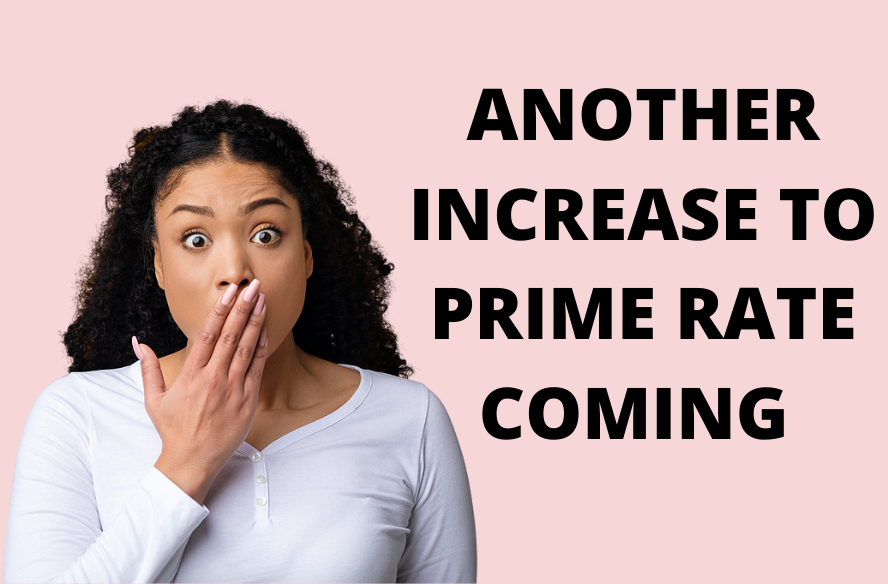The next rate announcement from the Bank of Canada is scheduled for April 13th. Many will be watching closely to see if they will be increasing their key policy rate for the second time this year. This is the rate that mortgage lenders use to set their prime rates, which is of most interest to those currently in, or considering a variable rate mortgage.
The Bank of Canada increased their rate by 0.25% in their last announcement on March 2nd, which was the first increase since October 2018.
But what can we expect on April 13th?
I would say that the chances of them increasing their rate on this date are pretty close to 100%.
But will they keep their increase to the standard 0.25%? Or is it possible that they could increase their rate by a larger margin?
As inflationary pressure builds, the sooner the Bank of Canada will need to react to keep it from spiralling out of control. The best way for them to combat inflation is to increase their key policy rate. No one likes it when interest rates rise, but we also don’t like excessive inflation on everything else. The Bank of Canada is forced to increase their rate further to keep inflation in check.
If the Bank of Canada increases their rate too quickly, they risk jeopardizing the health of the economy. But if they wait too long, they risk letting inflation get away from them, which then becomes a problem for everybody. Look at what is happing with gas prices right now. It’s happening in other sectors as well. This must be brought under control, and to accomplish this, the Bank of Canada rate needs to increase.
The war in Ukraine creates uncertainty, which usually points to the Bank of Canada erring on the side of caution. In other words, uncertainty will usually keep rates low. However, the war is adding additional challenges to an already weakened supply chain which is further fueling inflation. This puts additional pressure on the Bank of Canada to increase their rate in a situation where they would typically hold it steady or even cut.
In this situation, they will have no choice but to increase their rate.
A Larger Rate Increase Is Possible
The standard move of 0.25% may not be enough, even if additional rate increases are planned throughout the year.
A double increase is possible, if not probable.
This would mean that the Bank of Canada would increase their rate by 0.50% on April 13th.
Should this happen, we would see the prime rate go from 2.70% to 3.20%.
A Look At Fixed and Variable Pre-Pandemic Vs. Today
While the 3.20% sounds high given the low prime rate we have become accustomed to over the past two years, it’s still 0.75% below the pre-pandemic prime rate of 3.95%. At the time, the lowest 5 year fixed rate for an insured mortgage was 2.64%. The comparable variable rate was prime -1.25% (2.70%). The variable rate was 0.06% higher than the lowest 5 year fixed at the time.
Fast forward to today.
The lowest 5 year variable rate for an insured mortgage is prime -1.35% (currently 1.35%). The lowest 5 year fixed rate for an insured mortgage with the same lender is 3.54%. This is a spread of 2.19%, which means it would take nine 0.25% rate increases from the Bank of Canada to surpass today’s 5 year fixed rate.
Yes, the Bank of Canada is expected to increase multiple times this year, which can make a variable rate mortgage seem scary.
But the larger spread gives you additional protection against rising rates, which means that a variable rate mortgage can still be a good choice. You just need to be prepared for the higher rates to come.
More Rate Increases To Come
Even if they increase by 0.50% on April 13th, they are not going to stop there. There is some speculation that they could increase by another 0.50% in their following announcement on June 1st, with more increases to follow. The Bank of Canada has said that they are ‘prepared to act forcefully’, so back-to-back 0.50% moves are possible.
They have a major inflation problem on their hands, and they need to get it under control.
Even if they increase by 1.00% by June 1st, the spread between fixed and variable is still around 1.19% in some cases, which is still among the largest it has been in years.
Conclusion
The economic environment is always changing, therefore predictions will as well. Anything can happen and circumstances can change. No one has a crystal ball, and all we can do is go by the information we have available to us today. The Bank of Canada is prepared to act aggressively, and if successful, it will get inflation under control.
This should keep our everyday living costs from skyrocketing.
As mentioned in previous blogs, the more aggressive they become with rate increases, the sooner they will come forward with decreases to follow. As always, anything can happen.
I would highly recommend reading the following of my blogs which will help you to prepare yourself for higher mortgage rates to come:








Leave A Comment